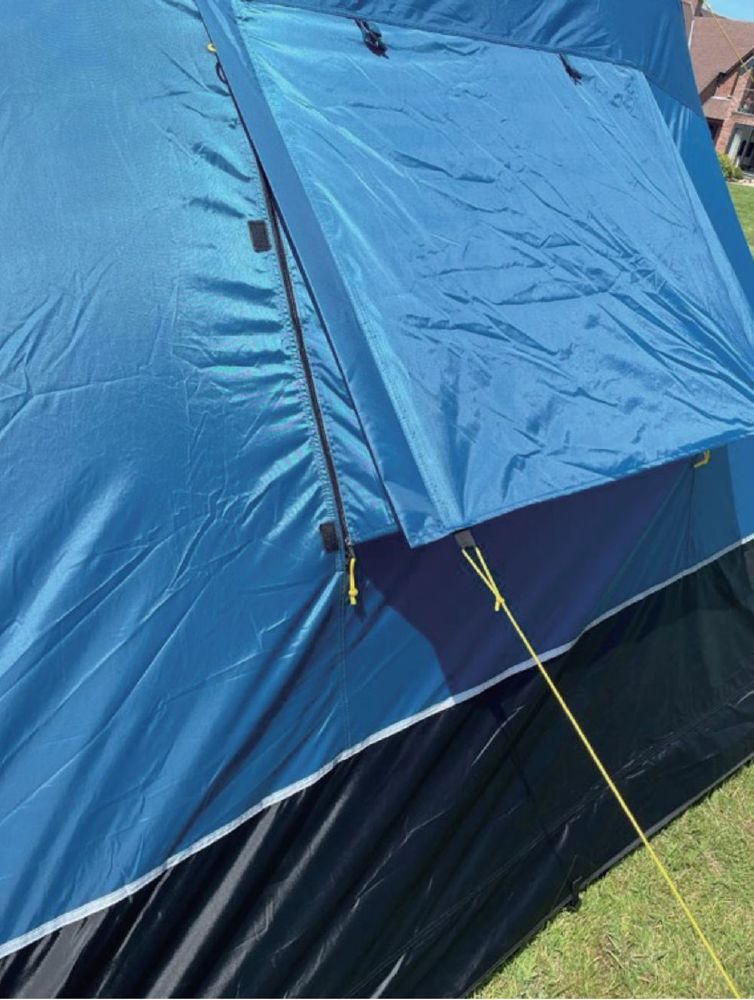Description
Robens Challenger 2 High End Tent
The Challenger 2 uses our tried and tested side-entry sloping tunnel design to provide stable and comfortable sleeping space with enhanced headroom for two people while minimising pack size and weight.
Storage is maximised by offsetting the inner tent to give extra porch space, and there is also zip access from the inner to an additional storage area at the foot of the tent. Mesh pockets and a gear rope add to storage options.
Specifications Robens Challenger 2
Art. No. 130250
Barcode - Product 5709388102676
Type of tent Tunnel
Sleeps people 2
Flysheet HydroTex HD RS, 75D polyester 190T, Ripstop, Fire retardant, 100% polyester
Hydrostatic Head 5000 mm
Taping Taped seams
Pitching way Flysheet first or as one
Inner tent 68D polyester 190T, breathable, 100% polyester
Floor inner 75D polyester Taffeta 210T, 10.000 mm, 100% polyester
Weight 2.4 kg
Minimum weight 2.1 kg
Pack size 41 x 15 cm
Poles Alloy #7001, T6, 8.5 mm, anodised
Windtest max 140
Windtest AVG 130
Pieces per carton 4
Features Robens Challenger 2
Storage area at foot
Luminous zip pulls
Colour coded alloy poles and pole sleeves
Pole sleeves closed one end for easy pole insertion
Adjustable main pegging points feature sturdy alloy buckles
Flysheet fabric repair patch included
UV Degradation:
Be aware that (UV) ultraviolet rays will damage your tent if you expose it to direct sunlight for longer periods of time.
Polyester Awnings & Tents regardless of quality of denier material are made for camping use which is normally 2-5 weeks usage a year.
They are not designed for permanent usage and should only be used as camping products.
Camping near the sea or lake can further enhance the effect of UV radiation.
The same applies to poles and metal parts
"UV light will cause the fabric to fade, lose strength, and eventually disintegrate. The amount of UV damage is directly related to the fabric's exposure to the sun and the altitude at which the tent is pitched.
If it is left pitched during the day, high-altitude exposure can damage a tent beyond use within a month."
What is UV Degradation?
UV degradation refers to the breaking down of fabrics and materials, when exposed to ultraviolet radiation, due to exposure to the sun. Long term exposure to sunlight, can cause fabric such as polyester to degrade, beginning to rip, tear and become very brittle.
Why Do Manufacturers not cover UV Degradation Under Warranty?
UV degradation is a sign the product has reached a natural end to it's lifetime. There are different fabrics, different thicknesses of fabric, and treatments to help protect against exposure to sunlight.
However, given time, the sun will do it's job in breaking down those materials, to the point where they become unstable.
If a polyester tent or awning has suffered UV degradation, chances are it has been used to the point where its lifetime is ending, or it has been permanently pitched.
Polyester Tents & Awnings are a temporary shelter, and they are not designed to be left long-term pitched, unless they are specifically designed for residential pitches, and use harder wearing fabrics such as 100% cottons, which can take exposure to UV light on a longer-term basis.
Polyester Tents & Awnings have it pretty rough. Their purpose is to keep you protected from the elements, so by definition, they’re exposed to nature’s fury. Season after season, your trusty tent or tarp is subjected to wind, rain, dust, snow, hail, animals, and (sometimes) careless users.
But for a shelter that has been treated well over the years, the thing that will eventually kill it is something you might not expect: the sun.
In addition to visible light, the sun emits a massive amount of ultraviolet (UV) radiation, which has a shorter wavelength than visible light and is present wherever there is sunlight.
While inorganic materials (like silicone and metal) are largely unaffected by UV radiation, organic compounds (i.e., anything containing carbon, not just your fancy kale) can be damaged by exposure to UV.
This includes all organic polymers, whether synthetic (like nylon and polyester) or naturally occurring (like cotton and wool).





















